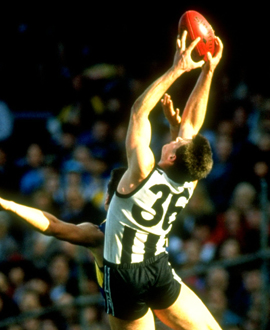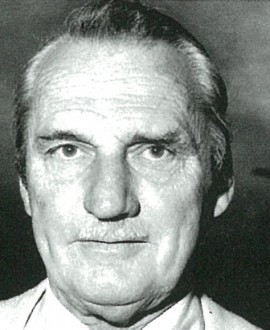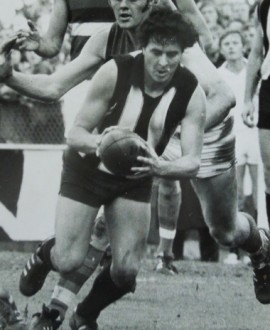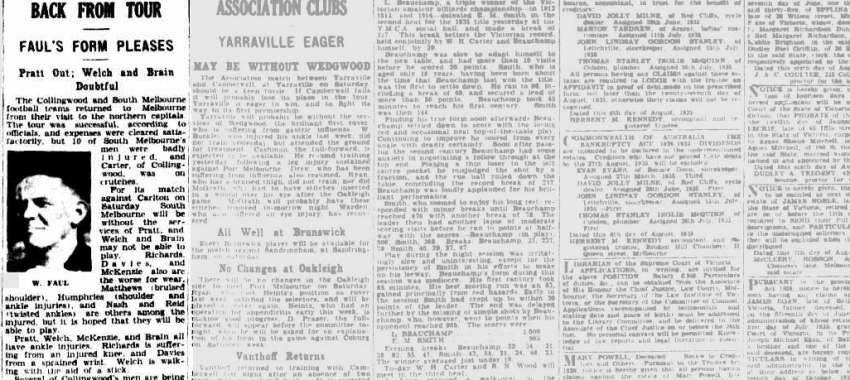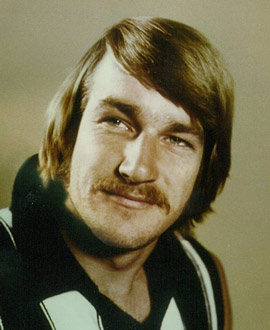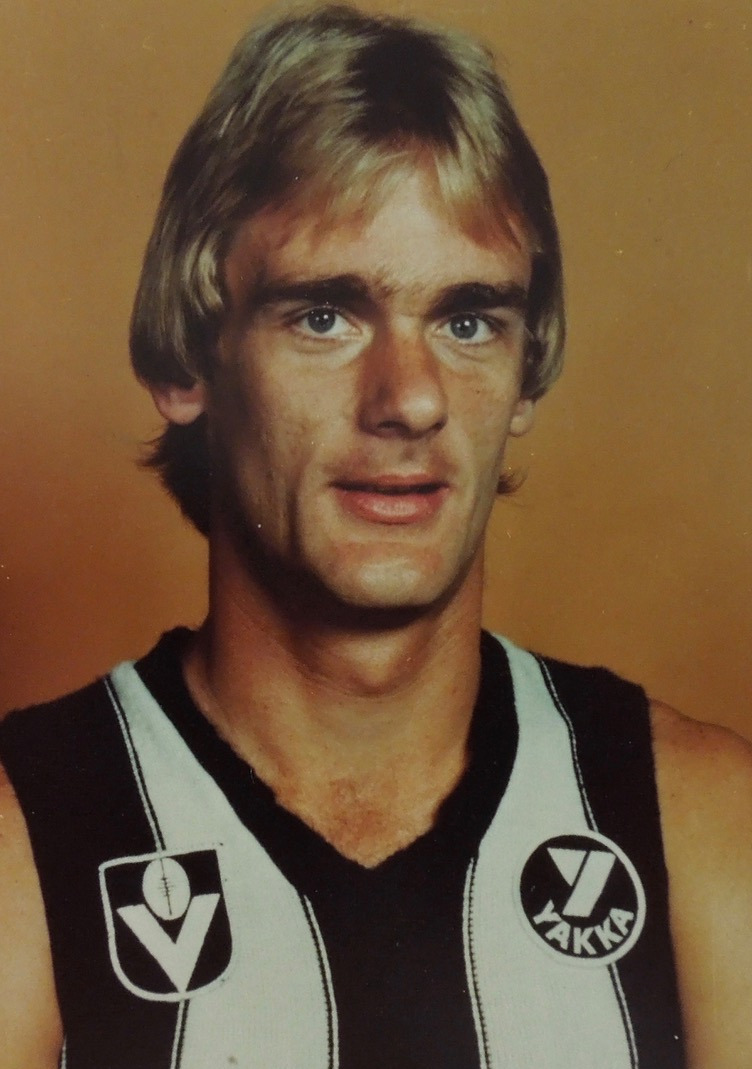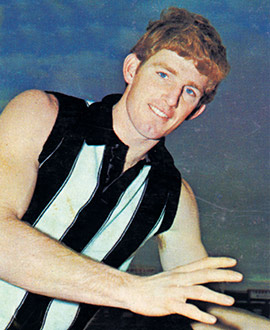By: Glenn McFarlane
For teams so regularly appearing in the finals in modern memory, it seems odd that Collingwood and Hawthorn have only met in four finals.
Although the two sides have played against each other since Hawthorn joined Footscray (now Western Bulldogs) and North Melbourne in the competition in 1925, it took almost 50 years for the first finals encounter between the teams.
That was in 1974, when Hawthorn defeated Collingwood by 50 points in the first semi-final. Three years later, the John Kennedy-led Hawks and the Tom Hafey-coached Magpies finished one-two on the AFL ladder, with Collingwood winning a stirring contest by two points.
Then, in 1978, Hawthorn defeated Collingwood by 56 points in the qualifying final on the way to the club's fourth premiership.
That was followed by a 33-year gap between finals pairings between the teams, ending in last year's preliminary final, a classic encounter which Collingwood managed to win by three points.
So that makes that 1977 second semi-final the closest of the four finals that Collingwood and Hawthorn have played - one point less than the 2011 prelim.
Sadly, that match has been sorely overlooked for two very distinct reasons.
The first was the fact that Phil Carman, the Magpies' flamboyant and controversial star forward, was reported for striking Hawthorn's Michael Tuck in the opening quarter of the game. He was suspended for two matches and ruled out of the 1977 Grand Final.
The second was the fact that it ended up being two Grand Finals that Carman missed - a fortnight after that semi-final, Collingwood and North Melbourne fought out the second drawn premiership playoff in history.
Instead of just watching one Grand Final sitting down on the bench - dressed in his civvies - Carman had the agony of watching both the drawn game and the replay, in which Collingwood lost to North Melbourne by 27 points.
The fact that the Magpies ultimately finished runners-up - and that Carman's brain fade and two-game suspension almost certainly played a role in it - has meant so many people have expunged the second semi-final from their memory.
But they shouldn't.
Collingwood's win over Hawthorn that September afternoon was a remarkable one - the first of Tom Hafey's 18 finals as Collingwood coach after he had led the team that finished bottom of the ladder under Murray Weideman in 1976 to the minor premiership the following year.
Hawthorn finished second, setting up a big second semi-final clash between 87,421 fans at the MCG.
Len Thompson said later: "In the rooms before ... (the game), there was a quiet, confident feeling among the players."
The Hawks sprung an early surprise when it started David O'Halloran instead of Peter Knights on Carman, who was said to be still "wearing those famous white boots". But the move barely lasted a quarter before Knights was shifted onto the dangerous Magpie forward.
Carman kicked Collingwood's first three goals to establish a slight early lead - the first from what the Sporting Globe described as "a snapped goal over his shoulder from an acute angle"; the second from a passage of play that started with full-forward Peter Moore.
Carman, who had turned 27 six days earlier, kicked his third after a bouncing ball eluded Michael Moncrieff, which was swooped upon by the busy Ron Wearmouth, who gave off to the man in the No.9 jumper, playing his 51st game.
As Greg Hobbs wrote: "Carman was singling himself out as the number one danger man for Hawthorn", which was when Kennedy made the opponent shift.
The most controversial moment - one that will forever haunt Carman, Hafey and Collingwood fans for the rest of their lives - came when the Magpie forward suffered a moment of madness, by striking Michael Tuck as they neared the boundary line. The boundary umpire made an instant report, citing "a fist to the head."
Carman recalled years later: “I contested the ball at centre half-forward and it was knocked away.
“I ran 30-40-50 metres. The adrenalin was really pumping - and I just wanted to crash into a few bodies. ‘Tucky’ was there and I ran through him.
“I didn’t think there was much in it. Unfortunately, there was video of the incident and it didn’t look too good. It showed my arm was raised and I’d contacted him with the forearm.”
There followed four successive goals to Hawthorn, and score line of 6.5 to 4.0 gave the Hawks a 17-point lead.
Some wondered if the Magpies' finals curse was going to be a factor again - with the Sporting Globe noting: "After a sparkling first term from (Hawthorn), many spectators thought Collingwood would buckle."
But there was no sign of that in the second term. Instead, the Magpies made their move, kicking 3.3 to the Hawks 0.3 to lead by a point at half-time.
That started when Rene Kink kicked the opening goal of the second term with the Magpies taking the advantage of the wind blowing to the Punt Rd end.
Len Thompson, one of the best players on the field, saved a certain goal at one end, making on the last line, and soon after, registered one for his team after his opponent Don Scott gave up two 15 metre penalties to gift a certain major.
And Wearmouth put the Magpies in front by a solitary point with a "breathtaking" goal 26 minutes into the second term.
Things remained very tight as the third term got underway. Peter Moore kicked a goal to start the second half before a Ricky Barham handball found Ray Shaw who put the Magpies two goals clear. And Wayne Gordon pushed the difference out to 19 points at the 18-minute-mark of the quarter.
Hawthorn had gone goal-less for more than 50 minutes before Collingwood defender Kevin Worthington, doing a good job on Peter Hudson, gave up a free kick which allowed the champion Hawk to get on the board. The Hawks kept coming.
Shaw received a "doubtful free kick" from umpire Neville Nash, which kept Collingwood's nose in front, with the last goal of the term coming from Hudson, who was starting to prove a handful for the Magpie defenders.
Thirty seconds into the last term, the Hawks were in front. Moncrieff had been shifted forward and he was left unattended in the goal square where Hudson found him with the ball. The difference was only a point, in Hawthorn's favour.
It was that sort of quarter, one that ebbed and flowed, and Peter Moore grabbed the lead back after Kelvin Moore interfered with him. Then Barham banged home a "clever left foot goal" and it was followed by a fourth goal to Carman who made the difference 17 points.
But the Hawks kept whittling the margin closer and closer, with goals to Leigh Matthews and Geoff Ablett.
As the quarter rolled on, and the tension rose, Moore's presence in attack proved crucial, and his fourth goal for the game was followed by a fourth to Hudson (all of his goals in the second half).
Then, just as Hawthorn surged, and as the crowd roared, Collingwood "sent the ball forward ... Max Richardson, a quiet player all day, ran around several Hawthorn players, bounced the ball twice and sent through a goal which virtually sealed the game for Collingwood."
The final siren extinguished hope for Hawthorn; and ushered Collingwood into its first Grand Final in seven years - since that fateful 1970 flag playoff.
Thompson said: "Peter Moore's kicking in front of goal was good; our backline fought very well, Worthington was brilliant on Hudson and fellows like Wearmouth and (Phil) Manassa were great driving forces.
"I've waited a hell of a long time to play in a premiership season - this is my 13th season - and I don't want to wait any longer."
Captain Max Richardson added: "It was a great team effort today ... to withstand Hawthorn's pressure and we proved we're a better side."
But Hafey, a four-time premiership coach at Richmond, knew not to get too excited too soon.
After the game, he said: "I was disappointed we relaxed when we had them on toast, but it's to Hawthorn's credit that they did come back," Hafey said. "We don't have a great many stars. I think it's just a really good, even side."
Then he added: "Everybody's patting you on the back, but it's too early. We've got one more bloody match to win."
As it turned out, Collingwood had two matches to try and win. And, sadly, without Carman in both of them, it would prove too much.




